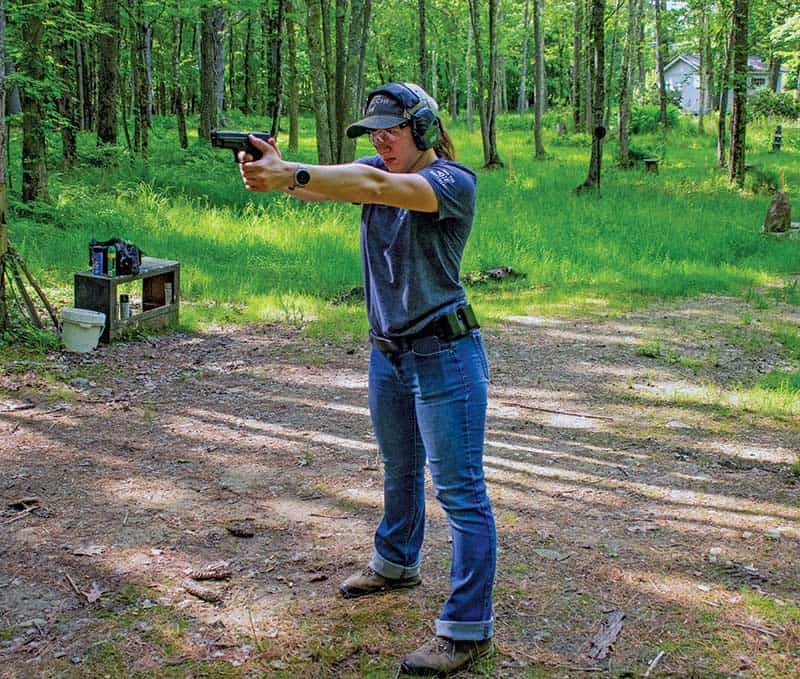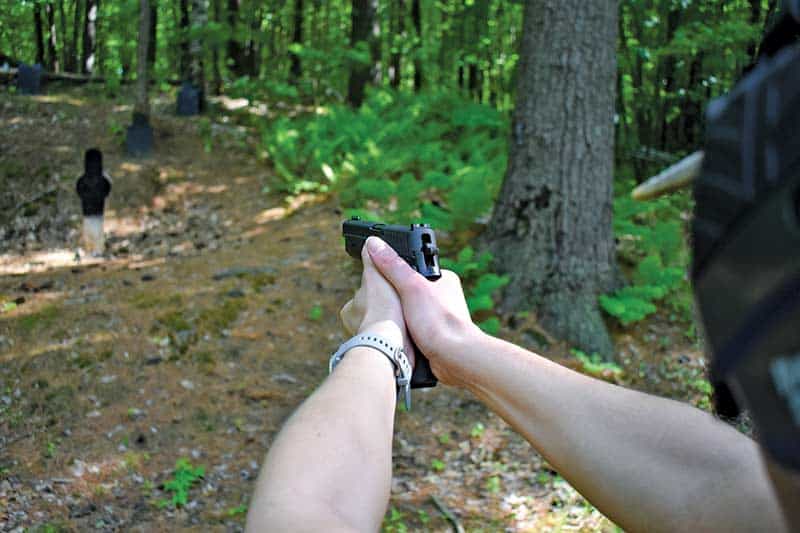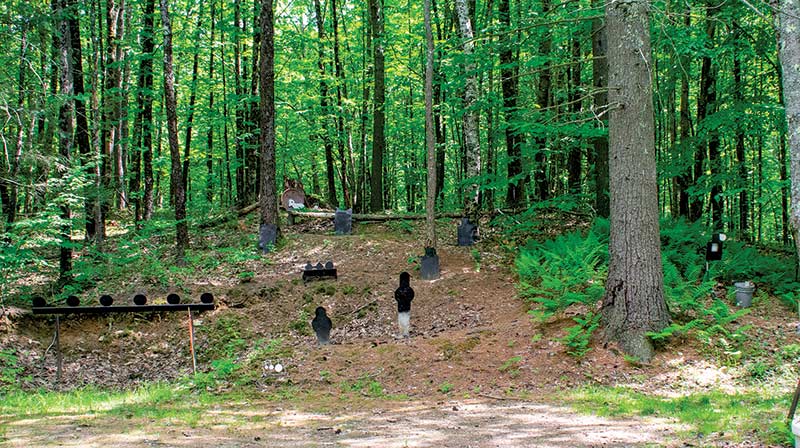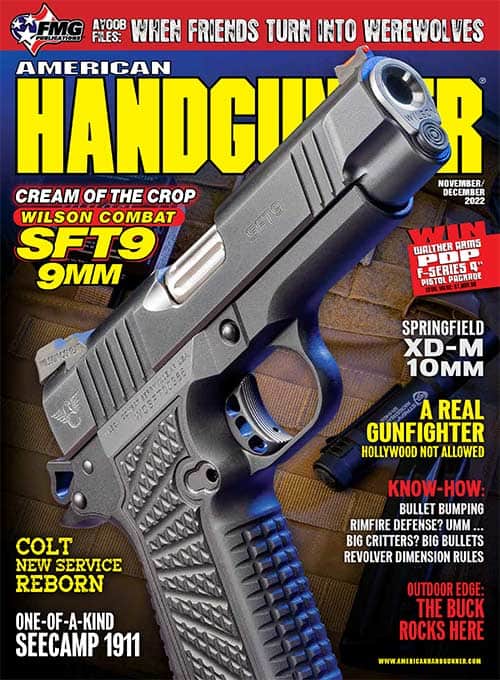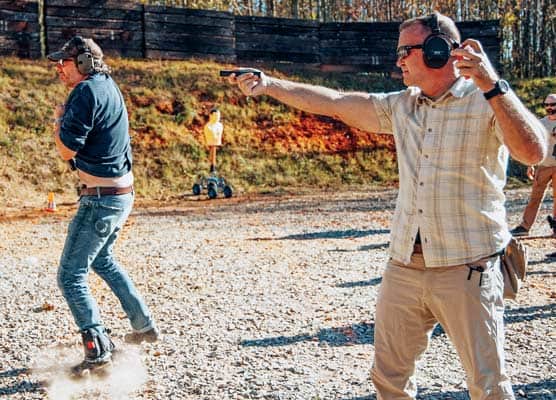Student Handgunner: Natural Point of Aim
It Matters
I never realized, and probably still don’t, how many shooters don’t understand natural point of aim (NPA). How to find my NPA was one of the very first lessons I learned when I started shooting rifles competitively. While largely understood in the competitive shooting world, it is of great value to any shooter looking to place hits on target.
What is Natural Point of Aim?
The easiest way to think of NPA is as where your muzzle wants to go when you are holding the gun with as little muscle tension as possible.
Have you ever continually missed a target right off the left or right? Repeating this phenomenon indicates an incorrect zero or a natural point of aim problem. For simplicity, let’s assume the gun’s zeroed. If you’re missing consistently, check your NPA.
Find Your NPA
The first thing you need to do is acquire your shooting position. It’s essential to be relaxed with as little lateral muscle movement as possible. From a supported position, you have bone support to rely on. Shooting freehand with a handgun is much harder. You need to use enough muscle to hold the gun, but not so much you’re uncomfortable.
Line your sights on the target as if to shoot. Close your eyes. Open them. Where are your sights? If they are no longer in the center of the target, your natural point of aim is incorrect. If your sights are to the right of your target, your shots will go right. If to the left, the same applies.
Moving your feet will fix this. Turn your trailing (back) foot an inch or so. Moving your foot to the left will move your NPA to the left; moving your foot to the right will move your NPA to the right. You can use either foot though using the trailing foot is more common. The amount required to move may vary but can be as small as moving a toe or heel. Keep in mind, if you are way off target, you may need to move both feet to be comfortable. You don’t want to shoot all twisted up just because the sights are on the target in that position. It isn’t sustainable.
Check It
Every time I pick up my service rifle, the first thing I do is check my NPA. After seven years, I’m conditioned and not doing so feels wrong. Full disclosure: I often dismiss it when I’m shooting handguns. Usually, I’m shooting 15 yards and under — how much could it matter? A lot, actually.
I visited SIG Academy’s George Harris, and we spent several days working to improve my handgun shooting. His backyard range included a trio of small plates. I hit some and missed some. George set the stage with one round left in the SIG SAUER 226 magazine. The fate of all of humanity rested on the last shot. I laughed, partly because of the premise and partly because this paired nicely with an unusually addictive series of sci-fi books I was reading. I missed, dooming the world to … I don’t know what. In the book, it was extinction.
I made up for it the next day, choosing the same troublesome targets to shoot. After hitting one and barely missing another, George reminded me to check my NPA. I did. The sights settled on the first plate I had knocked down. The second plate, the one I just missed, sat off to the left. Oops.
Sheepishly I corrected and sent the second plate flying. I knew better, but I got a bit lazy, assuming muscling the gun was okay (it’s not when shooting for precision) and the three plates were close enough to one another, it wouldn’t matter.
NPA Changes
NPA changes as you shoot. You should stop and verify every few rounds. The best example I can give is from my rifle experience. I typically shoot 20-shot strings offhand. After about five or six shots, I’d notice everything seemed a bit wilder and my scores would fall. I’d always be outside the 10 ring off to the left or right. As I shot, my body settled, and the position of my bones and muscles changed. Now I had a different NPA even though the target didn’t move.
Many people erroneously compensate for poor NPA by moving their sights (usually hard to do precisely/quickly on a pistol) or by muscling the gun. Give this a try the next time you head out to shoot.

